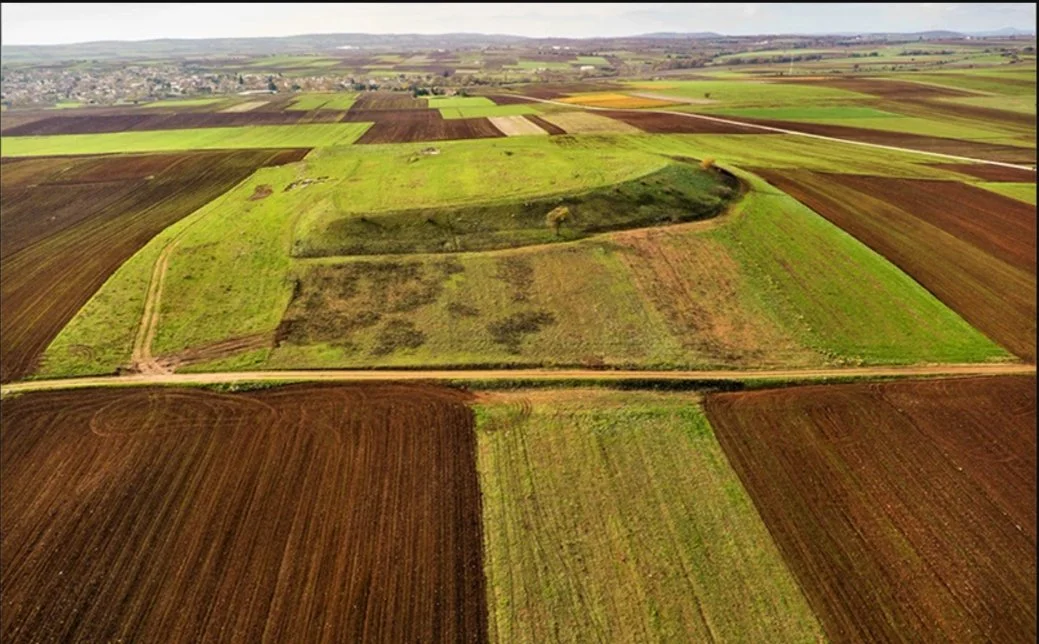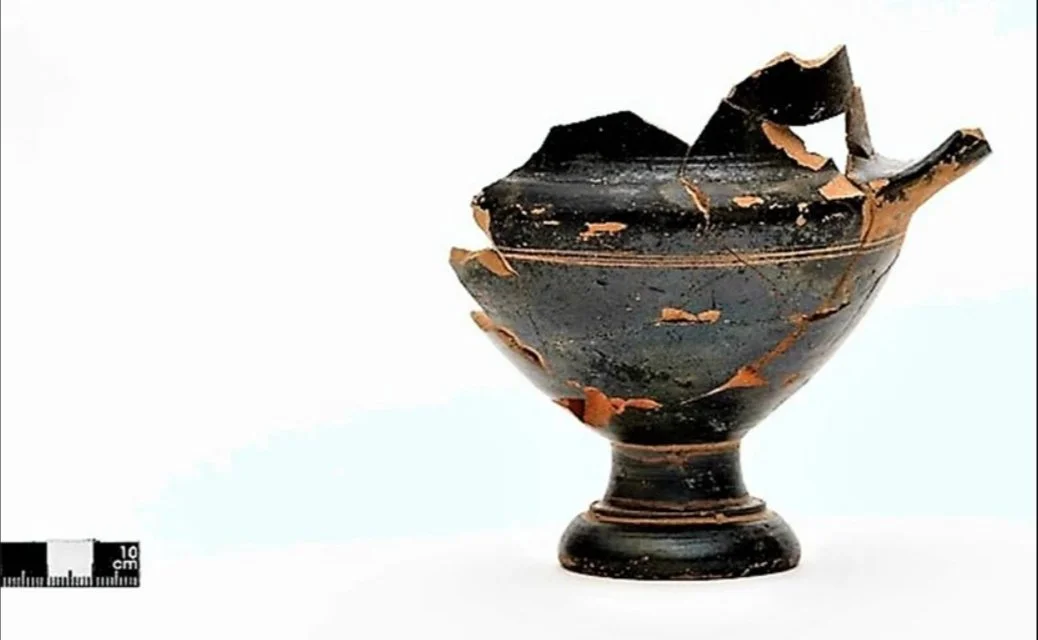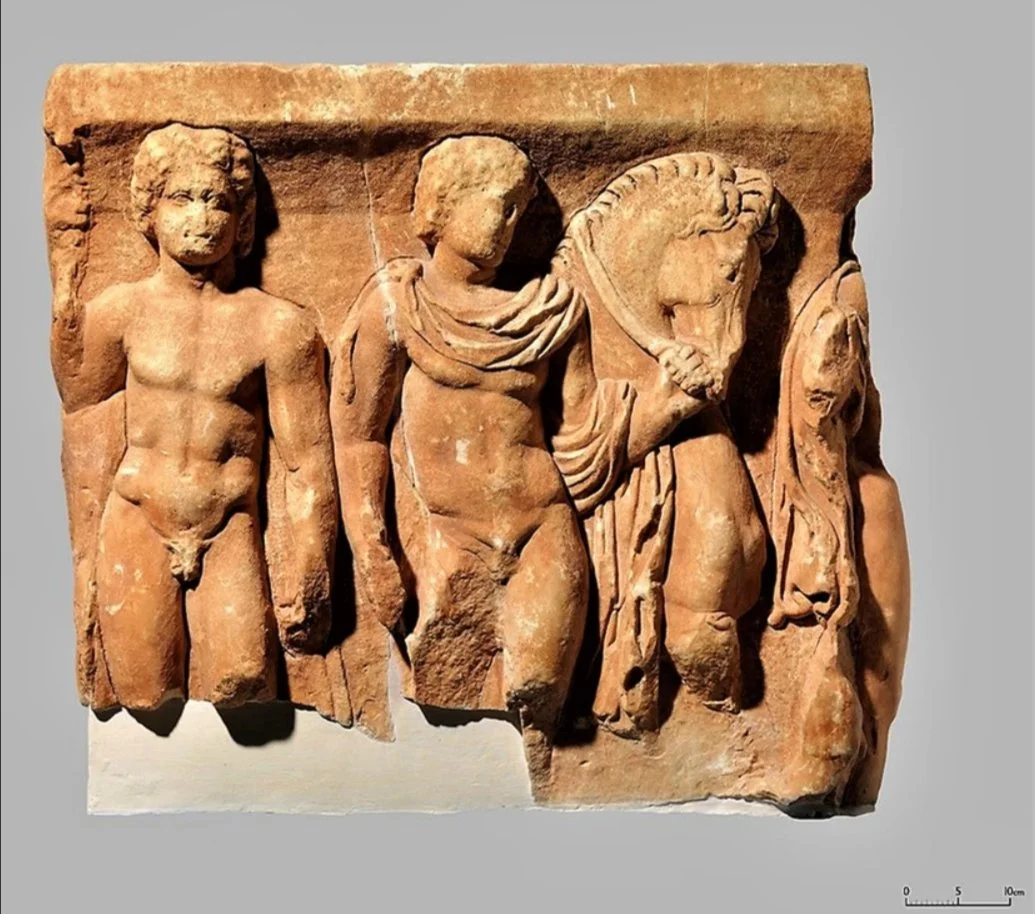During an archaeological excavation, an ancient city was uncovered at the gates of the city of Kilkis, between the communities of Kampanis and Pedinos of the municipality of Kilkis. The hoe unearthed a wall at least four meters high, which surrounded a city with a dense urban fabric. The base of the wall, about 5.5 meters wide, consists of a stone base and the rest consists of bricks covered with tiles.
Today, if you leave the prefecture of Thessaloniki behind and drive towards Kilkis, in the south of the prefecture, just after Nea Santa, you will see a series of hills which, if you are not familiar with them, you might think are natural hills. However, several of them are hills with a trapezoidal top. In the language of archaeologists, they are called "banks" with settlement remains, formed from the overlapping layers of ancient settlements.
In 2018, archaeologist and head of the Antiquities Department of Kilkis, Dr. Georgia Stratouli, and archaeologist Dr. Nektarios Poulakakis, head of the Department of Prehistoric and Classical Antiquities of the Antiquities Department of Kilkis, visited a site that has been proclaimed since the 1980s and is protected by the Archaeology Law. During their tour there, they found, among other things, broken pieces of vases on the surface, which they "read" to make an initial estimate of their dating.
"It was in November 2018 when we first conducted a targeted surface survey on the prominent Kampanis Pedinos bank and we realized we were stepping on a wall," Georgia Stratoulis told the Athenian-Macedonian News Agency. "We immediately decided not only to use the possibilities of excavation investigation, but also to carry out a geophysical survey of the soil, i.e. a method of scanning the ground, with the help of qualified researchers and special machines," he added.
This was done in collaboration with the Aristotle University of Thessaloniki, in particular with the Geophysical Research Laboratory headed by Professor Grigoris Tsokas, who proved the existence of a wall that surrounded an ancient city with a dense urban organization. "It is very important to find a fortified city from the Hellenistic and Roman periods in the interior of Central Macedonia, because we do not know many cities that have preserved their fortifications. From the synopsis and the lore registered from time to time in the Archaeological Museum of Kilkis, it is clear that it is an ancient city that dates back at least to the 4th century BC. Moreover, based on the geophysical surveys, we have the certainty that there are public spaces outside the wall and very close to it, which we intend to uncover in the next excavation periods", he stresses.
What came to light and what are the further plans
In the small and temporary excavations in 2021 and 2022, with only 130,000 euros and a single-digit number of craftsmen, the monumental central gate of the ancient city, on the south side of the wall, and about 60 meters of the southeastern section were uncovered. In addition, a square tower was uncovered about 30 meters east of the gate, while, as Ms. Stratouli estimates based on geophysical analysis, there will almost certainly be another to the west of the gate. "We have at least five or six towers that we recognise from the geophysical survey, with the possibility of another semicircular tower in the SE corner of the wall," he says.
In the near future, Ms. Stratouli and her team will submit applications for a more systematic excavation of the wall's perimeter, so that at least the southern and eastern sides of the wall will soon be visible. Indeed, these sides will be visible from the Thessaloniki-Kilkis provincial road that passes through the settlements of Mandres and Kampanis. "Apart from the excavations, we want to make the already exposed part of the wall visible. It could be partially restored by conventional means or with the use of modern technology. If we manage to deploy at least two excavation teams in 2023, we could complete the exposure of the entire southern wall and extend it to the eastern side in the next two years", said Ms. Stratoulis.
As Ms. Stratouli says, the desired goal is that the Ephorate of Antiquities, with the support of the Ministry of Antiquities, can gradually shape a new emblematic archaeological site that will contribute to the development of Kilkis and Central Macedonia.










